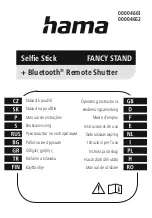
33
GLOSSARY
Access Point
A device that provides transparent access between Ethernet wired networks and IEEE
802.11 interoperable radio-equipped mobile units (MUs). Datalogic hand-held computers, or
other devices equipped with a PCMCIA slot, communicate with wired networks using Access
Points (AP). The mobile unit may roam among the APs in the same subnet while maintaining
a continuous, seamless connection to the wired network.
AP
See
Access Poin
t.
Bar Code
A pattern of variable-width bars and spaces which represents numeric or alphanumeric data
in machine-readable form. The general format of a bar code symbol consists of a leading
margin, start character, data or message character, check character (if any), stop character,
and trailing margin. Within this framework, each recognizable symbology uses its own unique
format.
Baud Rate
A measure for data transmission speed.
BIOS
Basic Input Output System. A collection of ROM-based code with a standard API used to
interface with standard PC hardware.
Bit
Binary digit. One bit is the basic unit of binary information. Generally, eight consecutive bits
compose one byte of data. The pattern of 0 and 1 values within the byte determines its
meaning.
Bits per Second (bps)
Number of bits transmitted or received per second.
Byte
On an addressable boundary, eight adjacent binary digits (0 and 1) combined in a pattern to
represent a specific character or numeric value. Bits are numbered from the right, 0 through
7, with bit 0 the low-order bit. One byte in memory can be used to store one ASCII character.
Data Communications Equipment (DCE)
A device such as a modem that is designed to attach directly to a DTE (Data Terminal
Equipment) device.
Data Terminal Equipment (DTE)
A device such as a terminal or printer that is designed to attach directly to a DCE (Data
Communications Equipment) device.
Decode
To recognize a bar code symbology
(e.g.,
Codabar, Code 128, Code 3 of 9, UPC/EAN, etc.)
and analyze the content of the bar code scanned.





































